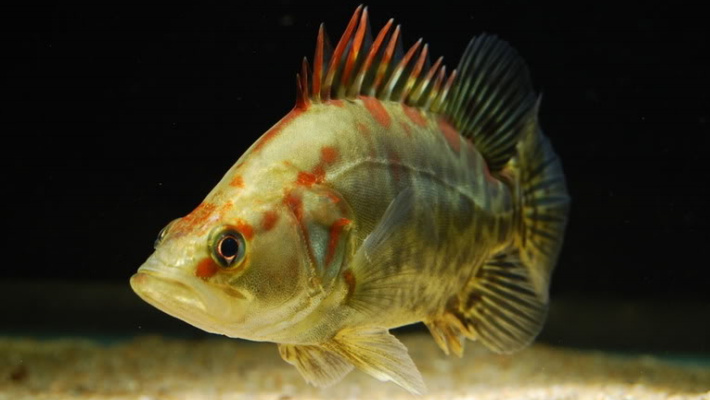|
Freshwater invertebrates
In the
laboratory experiments, amphipod Gammarus
pseudolimnaneus prefer leaves of maple,
Acer saccharum, conditioned by two fungi, Humicola grisea and Heliscus
lugdunensis, over uncoditioned leaves (Bärlocher & Kendrick, 1975). Two species of
caddisfly larvae (Trichoptera), Hesperophylax
magnus and Psychoglypha sp., show
feeding preferences to leaves of aspen, Populus
tremuloides, colonized by fungi, Flagellospora
curvula, Alatospora acuminata and more, over stream detrirus. (Arsuffi
& Suberkropp, 1986). Amphipod G.
pulex is most attracted to the aufwuchs on the conditioned
discs made of poplar (Populus canadensis)
leaves and less to the leaves themselves, fungi and bacteria are more important
than green algae Scenedesmus obliquus
(De Lange et al., 2005).
Generally,
feeding preferences in macroinvertebrates are associated with the leaf decomposition
rate that, in turn, is related to fungal colonization and protein content in conditioned leaves (e.g., Kaushik
& Hynes, 1971). Freshwater amphipods and isopods exhibit feeding preferences in the same order as the leaf
decomposition rate, approximately in the following sequence: elm > maple
> alder > oak > beech.
In
particular, in streams in the Western Oregon, USA, newly fallen leaves of alder, Alnus sp., are quickly colonized by
larvae of Leindostonta quercina
(Lepidostomatidae), other caddis larvae and snails (Oxytrema) (Anderson & Grafius, 1975). According to these authors,
the relatively high consumption rate of the unconditioned leaves by L. quercina demonstrates an exceptional
palatability or attractiveness of Alnus
leaves.
Graça et
al. (2001) have studied feeding preferences in caddisfly larvae, Nectopsyche argentata and Phylloicus priapulus from tropical Venezuela, Sericostoma
vittatum from Portugal,
as well as amphipod G. pulex from Germany.
In general, all shredders exhibit the same high preference for conditioned leaves
over unconditioned ones (beech, Fagus
sylvatica, alder, Alnus glutinosa,
and more), irrespective of the geographical origin of the trees or shredder
species.
However,
freshwater detritivore-shredders do not per
se prefer leaf litter being be able to select actively other food items
such as filamentous green algae or macrophytes. Friberg & Jacobsen
(1994) have studied feeding preferences of the trichopteran shredder, Sericostoma personatum, and the amphipod
shredder, G. pulex, in springbrook
with the major food source represented by beech (F. sylvatica) litter. Six food items have been tested: conditioned
beech leaves, conditioned alder (A.
glutinosa) leaves, conditioned Sitka spruce (Picea sitchensis) needles, fresh beech leaves, fresh macrophyte (Potamogeton perfoliatus) and fresh
filamentous green alga (Microspora
sp.). Conditioned leaves and
needles have been collected directly in the springbrook. Both shredders prefer
conditioned Alnus leaves and fresh Microspora,
conditioned Fagus leaves and Picea needles are less preferred food
items. For larval populations of another trichopteran shredder, Anabolia nervosa, from the two
streams with the different food availability, conditioned Alnus leaves
are the most consumed food item, then fresh pondweed P. perfoliatus (Jacobsen & Friberg, 1994). Larvae from the Alnus
shaded stream prefer conditioned Alnus leaves over all other food
items, while larvae from the stream with the abundant submerged macrophyte do
not clearly discriminate between conditioned Alnus leaves and fresh Potamogeton.
These data indicate the high attractiveness of conditioned alder leaves for
many freshwater detritivore-shredders and their feeding plasticity.
Fish
Rinses of decaying leaf detritus are
highly attractive to elvers of American eel, Anguilla rostrata, regardless of where detritus is collected (Sorensen, 1986). In contrast,
rinses of living and fallen leaves collected from the forest floor are not
attractive.
Coral reef clownfish,
Amphiprion percula, and other reef fish use terrestrial chemical cues (leaf
litter of beach tree called almond, Terminalia
catappa) to find island homes (Dixson et al., 2008, 2011).
Basic References
Anderson N.H., Grafius E. 1975. Utilization and
processing of allochthonous material by stream Trichoptera. Verh.
Internat. Verein. Limnol. 19, 3083-3088
Arsuffi
T.L., Suberkropp K. 1986. Growth of two
stream caddisflies (Trichoptera) on leaves colonized by
different fungal species. Journal of the North American Benthological Society 5, 297-305
Bärlocher
F., Kendrick B. 1975. Leaf-conditioning by microorganisms. Oecologia 20, 359-362
De Lange H.J.,
Lürling M., Van Den Borne B., Peeters E.T.H.M. 2005. Attraction of the amphipod Gammarus pulex to
water-borne cues of food. Hydrobiologia
544, 19-25
Dixson
D.L., Jones G.P., Munday P.L., Planes S., Pratchett M.S., Srinivasan M., Syms
C., Thorrold S.R. 2008. Coral
reef fish smell leaves to find island homes. Proceedings of the Royal Society B: Biological Sciences 275,
2831-2839
Dixson
D.L., Jones G.P., Munday P.L., Pratchett M.S., Srinivasan M., Planes S.,
Thorrold S.R. 2011. Terrestrial chemical cues help coral reef fish larvae
locate settlement habitat surrounding islands. Ecology and Evolution 1, 586-595
Friberg N.,
Jacobsen D. 1994. Feeding plasticity of two detritivore-shredders. Freshwater Biology 32, 133-142
Gazzera S.B.,
Cummins K.W., Salmoiraghi G. 1993. Elm and maple processing rates: comparisons
between and within streams. Annales de Limnologie
29, 189-202
Graça
M.A.S, Cressa C., Gessner M.O., Feio M.J., Callies K.A., Barrios C. 2001. Food
quality, feeding preferences, survival and growth of shredders from temperate
and tropical streams. Freshwater Biology
46, 947-957
Jacobsen D., Friberg N. 1995. Food preference of the
trichopteran larva Anabolia nervosa
from two streams with different food availability. Hydrobiologia 308, 139-144
Kaushik N.K.,
Hynes H.B.N. 1971. The
fate of the dead leaves that fall into streams. Archiv fűr Hydrobiologie 68, 465-515
Sorensen
P.W. 1986. Origins of the freshwater
attractant(s) of migrating elvers of the American eel, Anguilla
rostrata. Environmental Biology of Fishes
17, 185-200
|








 SUBSCRIBE
SUBSCRIBE


